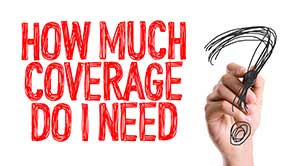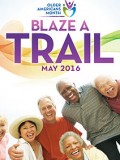 By Rhonda L. Randall, D.O.
By Rhonda L. Randall, D.O.
Baby boomers may not want to admit it, but many are turning 65. Approximately 10,000 baby boomers turn 65 every day, meaning one person becomes eligible for Medicare every eight seconds, according to United States Census data.
These boomers are discovering what many of the 55 million Americans currently enrolled in Medicare already may know—navigating the Medicare system can be challenging. According to a 2013 survey conducted by UnitedHealthcare, one in five beneficiaries describes Medicare as confusing.
Fortunately, resources and support are available to help combat Medicare confusion. To ensure your plan continues to provide the stable and member-centered coverage that’s a good fit for your needs, it’s a good idea to do an annual assessment of available options.
With the Medicare Open Enrollment Period (Oct. 15–Dec. 7) on the horizon, now is the perfect time to get educated about Medicare. Below are four easy steps to get started:
Step 1: Know your options
Medicare provides health insurance for people ages 65 and older as well as those with certain disabilities. The program consists of four main parts: A, B, C and D.
Original Medicare includes Parts A and B, covering care such as hospital services and doctor visits.
Part C, also known as Medicare Advantage, combines Parts A and B into one plan.
Part D helps with the cost of prescription drugs. Both Parts C and D are offered by private health insurance companies.
Medicare is not a one-size-fits-all program, which is why private health insurance plans such as Medicare Advantage can be a good option. More than 17 million people are enrolled in Medicare Advantage today—that’s almost one in three beneficiaries.
These plans often provide additional benefits and services that Original Medicare does not cover, like vision, hearing and dental care, gym memberships, disease management programs, and access to health care professionals 24 hours a day, seven days a week.
Step 2: Review your current plan
Medicare plans’ benefits and costs can change every year, which is why beneficiaries receive what’s called an Annual Notice of Changes (ANOC) in the fall.
To ensure they’re in a plan that is a good fit for their health and well-being needs, I strongly encourage all beneficiaries who are enrolled in a Medicare Advantage or Part D prescription drug plan to closely review the materials they receive from their insurer this fall.
They may not be the most exciting things you read this year, but they’re definitely some of the most important. So pour yourself a cup of coffee, set aside some time and get it done. You’ll be glad you did!
Step 3: Mark your calendar
The Open Enrollment Period (Oct. 15–Dec. 7) is an important time of year because, for most Medicare beneficiaries, it’s their one opportunity all year to make changes to their coverage.
Beneficiaries can switch from Original Medicare to a Medicare Advantage plan, for example, or from one Medicare Advantage plan to another. They can also enroll in a Part D prescription drug plan, or switch to a different Part D plan.
If your current plan and its benefits are remaining relatively stable into next year and are still a good fit for your needs, you may not need to make any changes – but you don’t want to let this period pass you by without at least considering all of your options.
Step 4: Take action
Many people take the “by default” approach of sticking with their current coverage rather than shopping around because they’re overwhelmed by all the options. The good news is, navigating Medicare doesn’t have to be a headache, and you don’t have to go it alone.
Take advantage of the variety of great resources that are available over the phone, in person and online, such as MedicareMadeClear.com, to help you learn about Medicare so you can feel more confident about your coverage decision.
Remember, your current plan may no longer be the best option for you, especially if your health status or budget has changed this year. Now is the time to look into your Medicare options and choose the coverage that is right for you.











